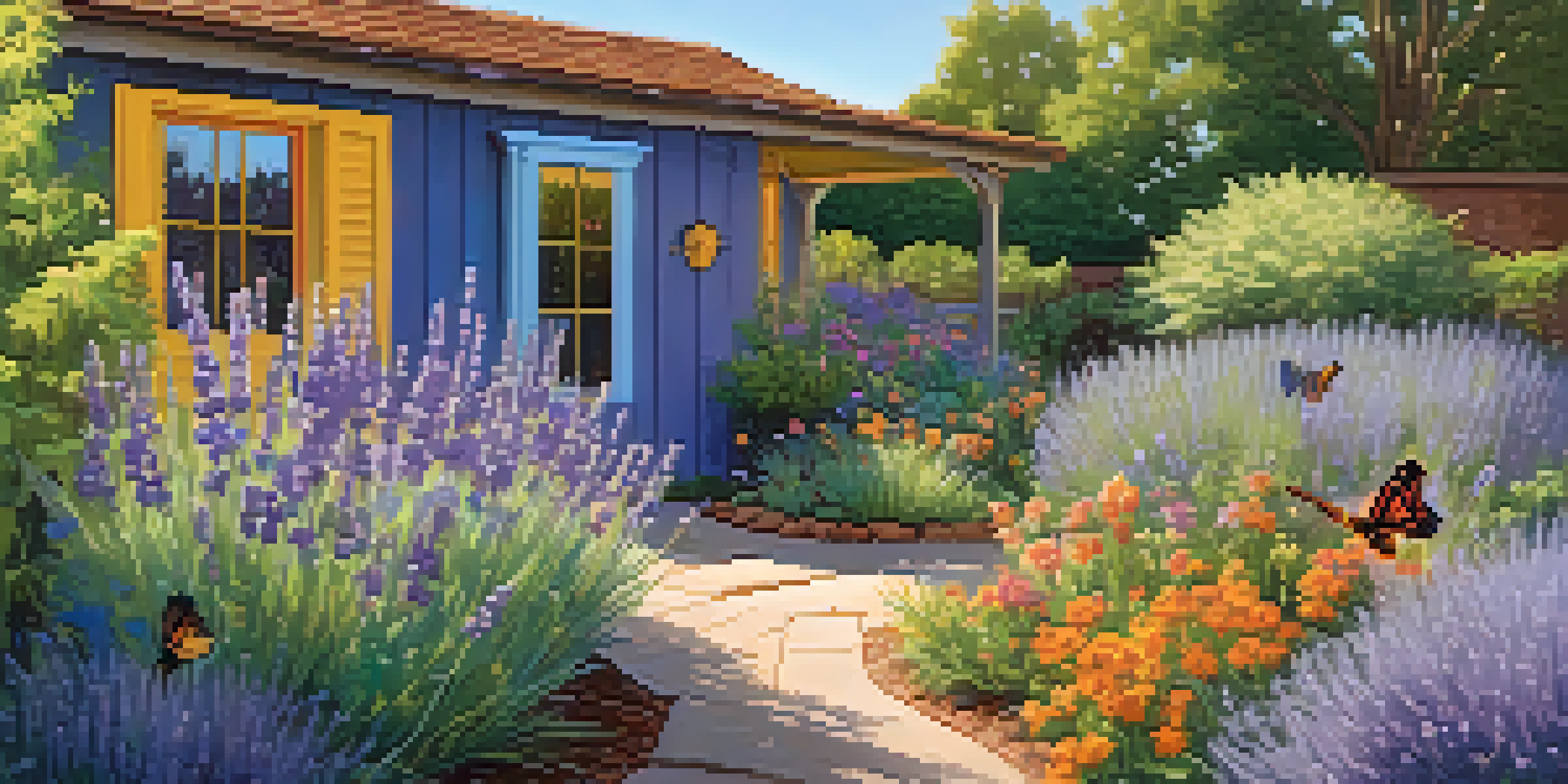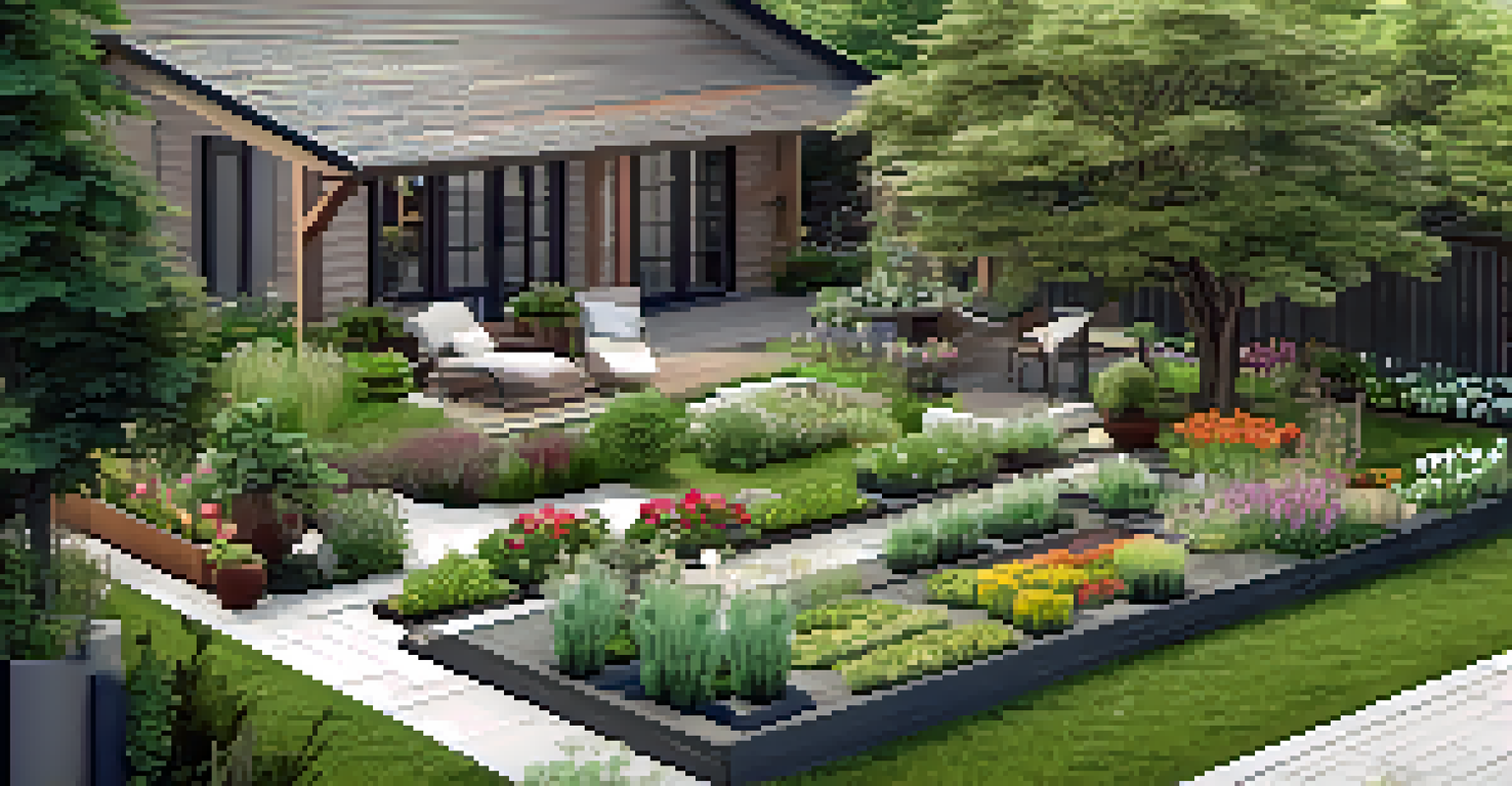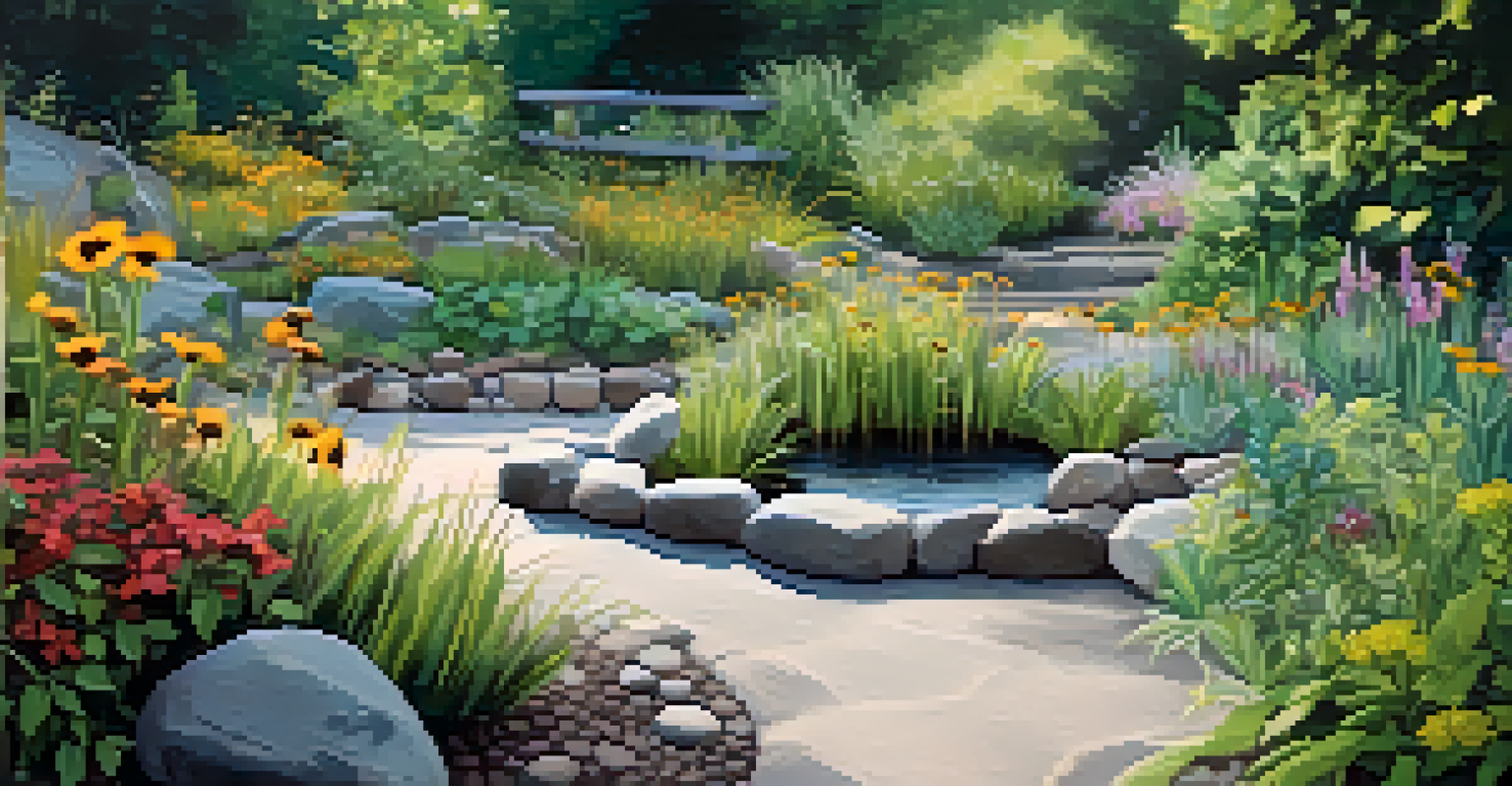Creating a Sustainable Garden with Digital Design Tools

Understanding Sustainable Gardening and Its Importance
Sustainable gardening is all about creating an ecosystem that thrives without depleting resources. It's a harmonious approach that respects nature while providing fresh produce and beauty to your space. By prioritizing sustainability, you not only contribute to environmental health but also enjoy a garden that requires less maintenance over time.
The best time to plant a tree was twenty years ago. The second best time is now.
The importance of sustainable gardening has never been clearer, especially as we face climate change and biodiversity loss. Creating a garden that conserves water, supports local wildlife, and reduces waste can have a significant impact. Just imagine the satisfaction of nurturing plants that not only benefit you but also help the planet.
Incorporating digital design tools into your gardening plans can enhance this experience. These tools provide a modern way to visualize and plan your garden layout, ensuring you make the most out of your space while adhering to sustainable practices.
Exploring Digital Design Tools for Garden Planning
Digital design tools have revolutionized how we approach gardening. Programs and apps allow you to create detailed layouts, simulate plant growth, and even track sunlight exposure throughout the day. This technology removes much of the guesswork traditionally involved in gardening.

For instance, tools like Garden Planner or SmartGardener let you drag and drop plants into your virtual plot, making it easy to visualize your garden's potential. You can experiment with different arrangements and plant combinations without the commitment of digging in the dirt first. This can be particularly beneficial when planning a sustainable garden as you can consider factors like companion planting.
Sustainable Gardening Benefits
Sustainable gardening enhances environmental health while providing beautiful, low-maintenance spaces.
Moreover, many of these tools include features that help you select the right plants based on your local climate and soil conditions. This ensures that you choose the most appropriate, sustainable options for your garden.
Choosing Native Plants for Your Sustainable Garden
Native plants are a cornerstone of sustainable gardening. These plants are adapted to your specific region, requiring less water, fewer nutrients, and minimal maintenance. By opting for native species, you create a garden that supports local ecosystems and attracts beneficial wildlife.
Nature does not hurry, yet everything is accomplished.
Consider visiting your local nursery or extension service to discover which native plants thrive in your area. For example, if you live in a dry region, plants like lavender or sage might be ideal choices. They not only beautify your space but also provide habitat for pollinators.
Digital design tools can assist you here, as many will suggest native plants based on your location. This feature streamlines the selection process and ensures you’re making choices that align with your sustainability goals.
Incorporating Permaculture Principles into Your Design
Permaculture is a design philosophy that focuses on creating self-sustaining ecosystems. It emphasizes the relationships between plants, animals, and the environment, which can lead to a highly productive garden. By integrating permaculture principles, you can further enhance the sustainability of your garden.
For example, you might design your garden to include a rainwater harvesting system, or create zones where plants can support each other, like planting nitrogen-fixing legumes near heavy feeders. This interconnected approach not only maximizes space but also reduces the need for chemical fertilizers and pesticides.
Digital Tools for Garden Planning
Digital design tools simplify garden planning by allowing users to visualize layouts and select appropriate plants.
Digital design tools can help you visualize these permaculture concepts, making it easier to plan out your garden efficiently. They allow you to see how various elements interact and ensure your design promotes sustainability.
Creating Efficient Water Management Systems
Water management is crucial in sustainable gardening, especially in areas prone to drought. Implementing systems like rain gardens, drip irrigation, or xeriscaping can significantly reduce water usage while maintaining a vibrant garden. These approaches ensure that every drop counts, promoting a more efficient water cycle.
For instance, using a rain barrel to collect runoff from your roof can provide a sustainable source of water for your plants. Drip irrigation systems deliver water directly to the roots, minimizing evaporation. Both methods can be visually planned through digital design tools, allowing you to strategize the best placement.
By integrating these systems into your garden design, you not only cut down on water waste but also create a landscape that thrives naturally without needing excessive resources.
Designing for Biodiversity in Your Garden
Biodiversity is essential for a healthy garden ecosystem. A diverse mix of plants attracts various pollinators, beneficial insects, and wildlife, all of which contribute to a thriving garden. When you design with biodiversity in mind, you create a resilient environment that can better withstand pests and diseases.
Incorporating a variety of plants, including flowers, herbs, and vegetables, can enhance this diversity. Consider using digital design tools to plan layered plantings that mimic natural ecosystems, such as combining tall sunflowers with shorter herbs. This not only maximizes space but also creates habitats for beneficial organisms.
Importance of Biodiversity
Designing for biodiversity creates resilient ecosystems that support various pollinators and beneficial wildlife.
Moreover, these tools can help you identify and include plants that bloom at different times, ensuring that your garden provides food and shelter throughout the seasons. This thoughtful approach to design fosters a rich biodiversity that supports the overall health of your garden.
Maintaining Your Sustainable Garden with Technology
Once your sustainable garden is established, ongoing maintenance is key to its success. Fortunately, technology can assist in this area as well. Apps can help you keep track of watering schedules, pest management, and seasonal plant care, making it easier to stay organized.
For instance, using a garden management app can remind you when to water or fertilize your plants, ensuring they receive the care they need. Many of these apps also offer tips on organic pest control methods, helping you maintain a chemical-free environment.

Incorporating technology into your gardening routine not only enhances efficiency but also aligns with sustainable practices, allowing you to enjoy a flourishing garden with less effort.